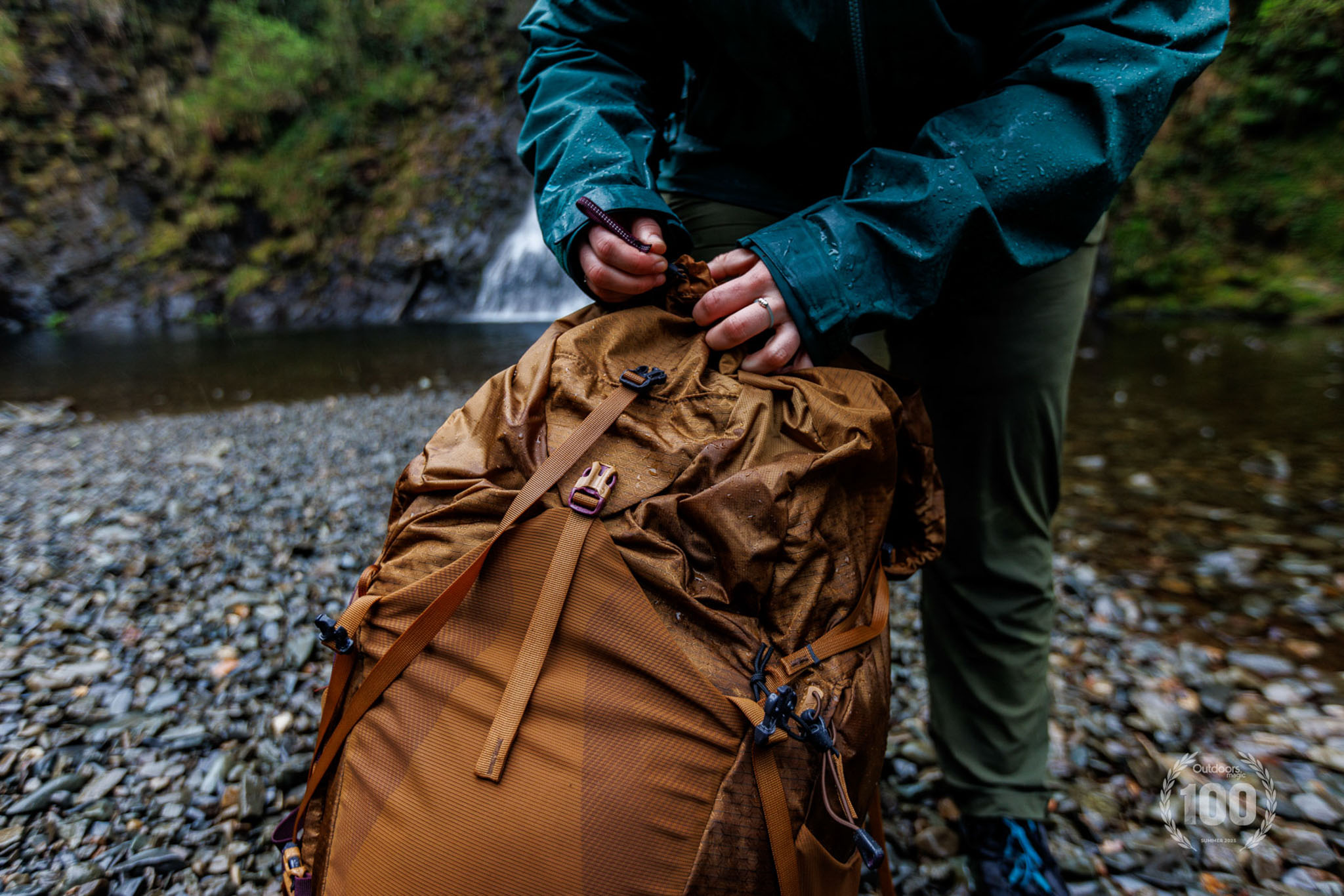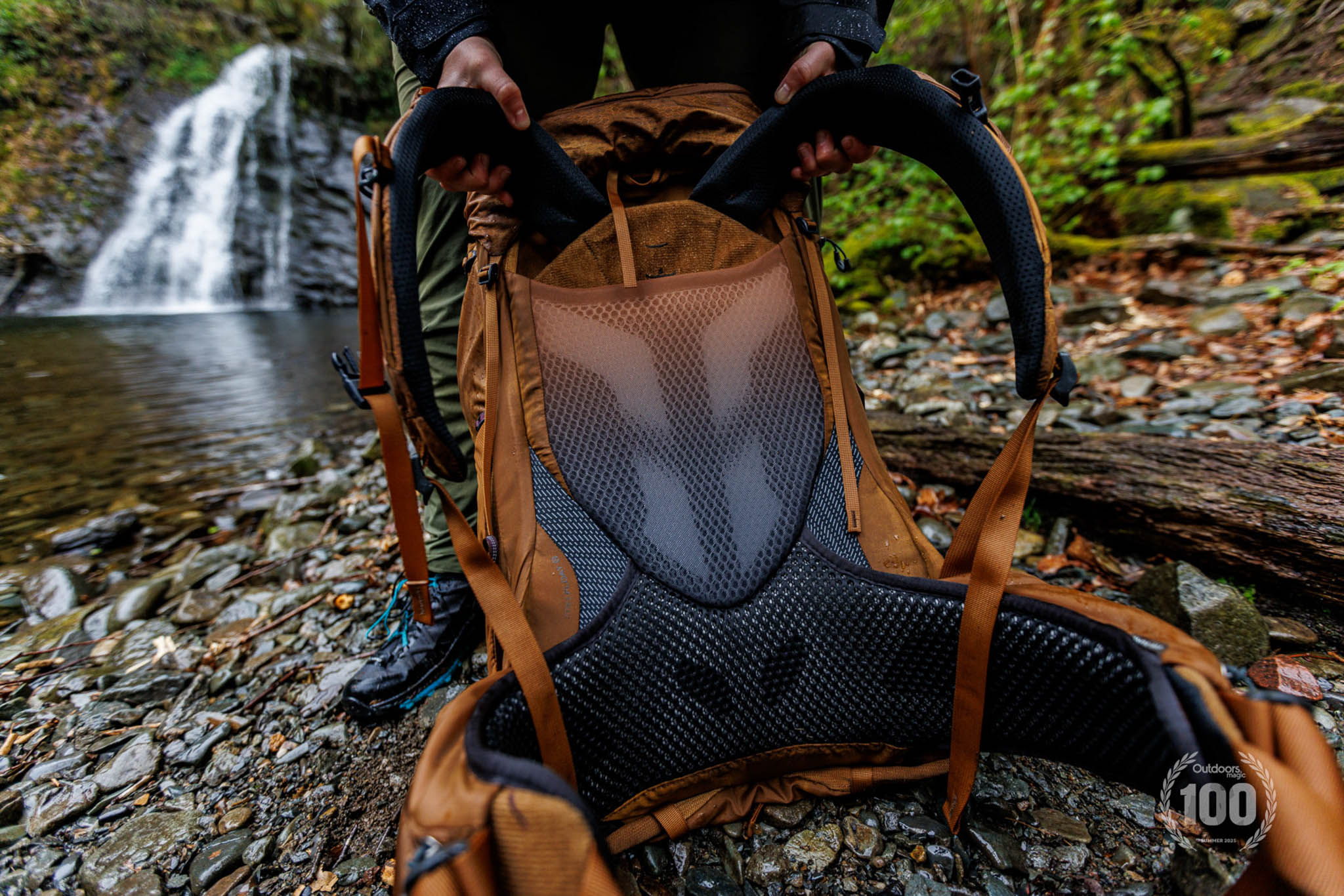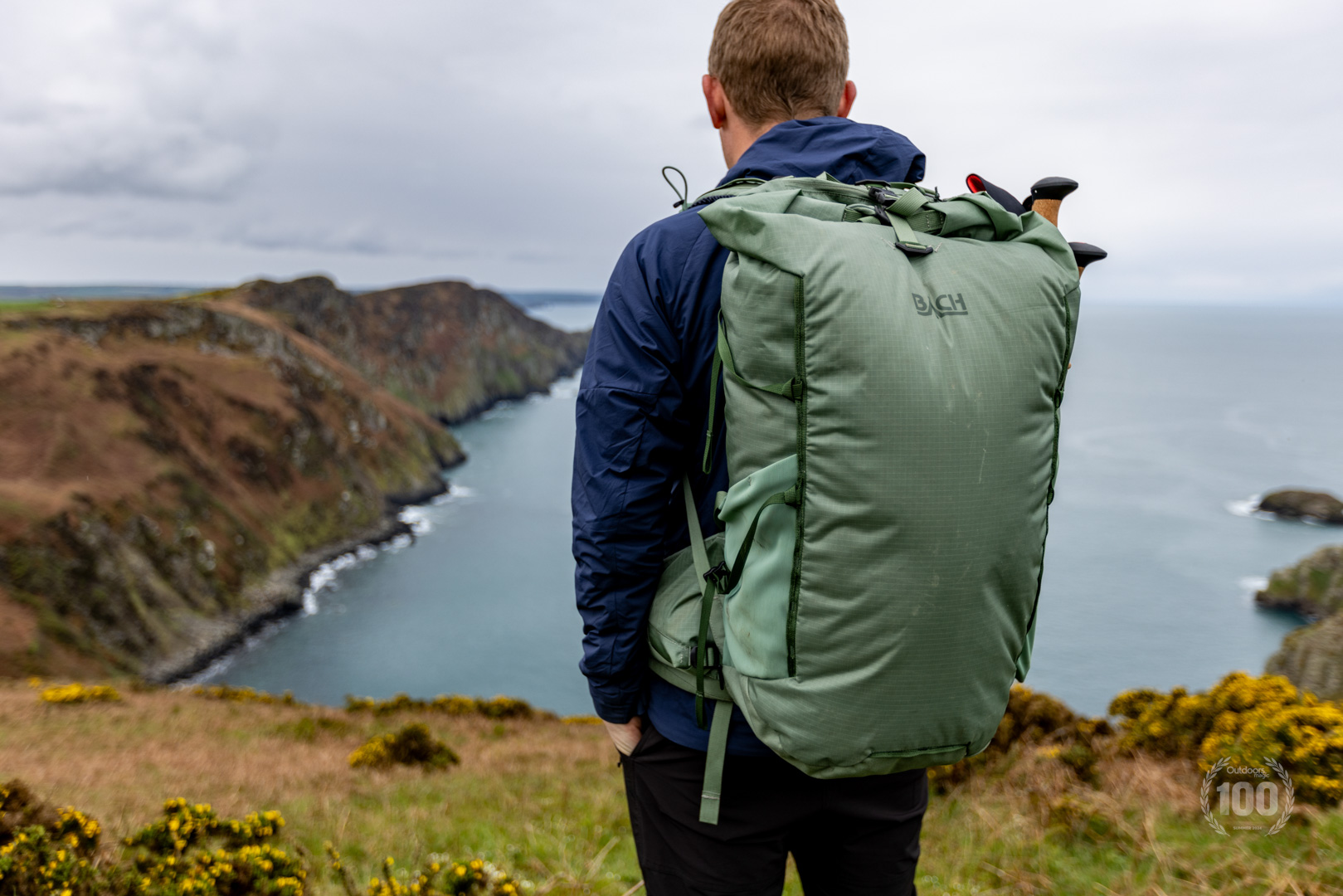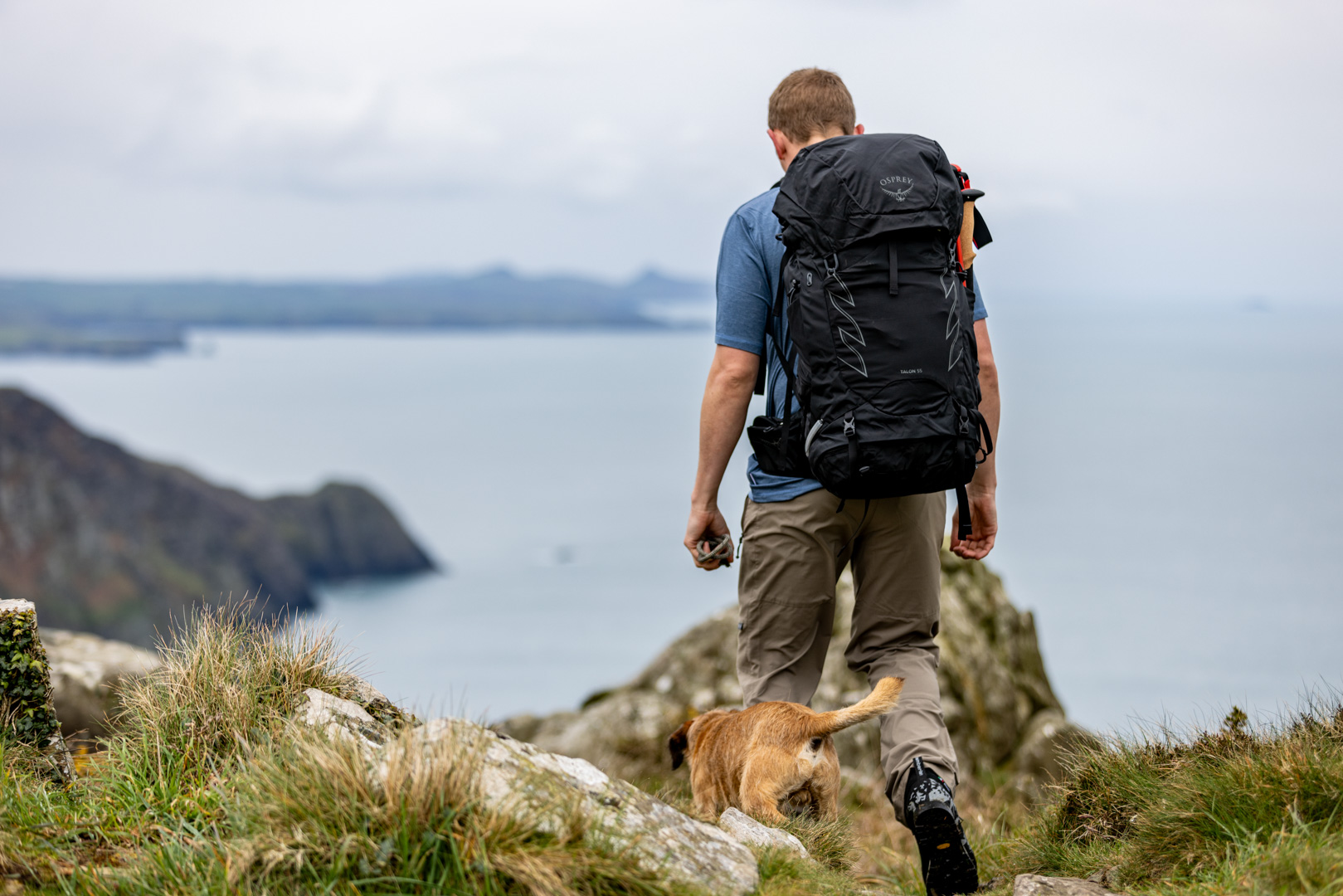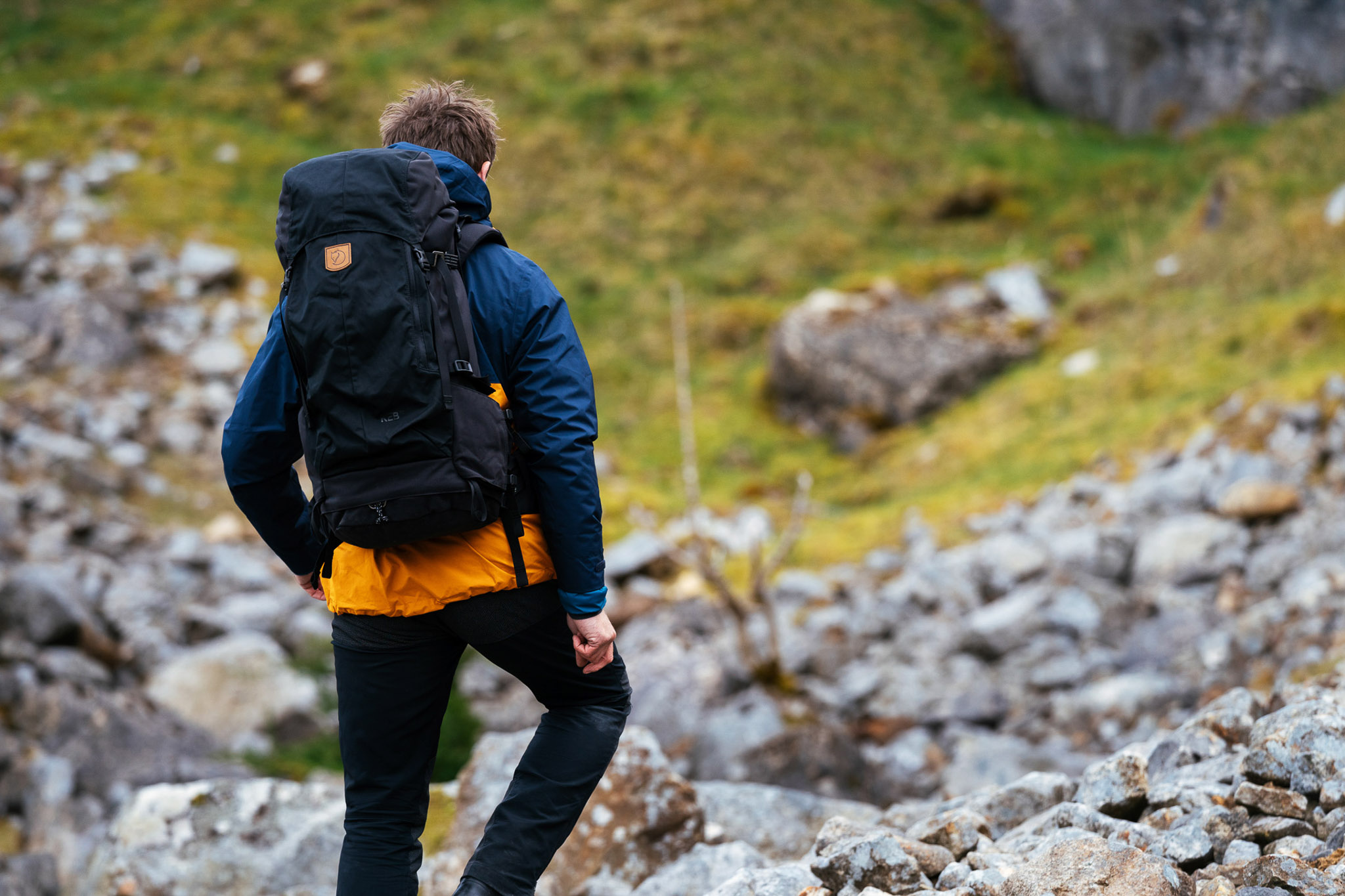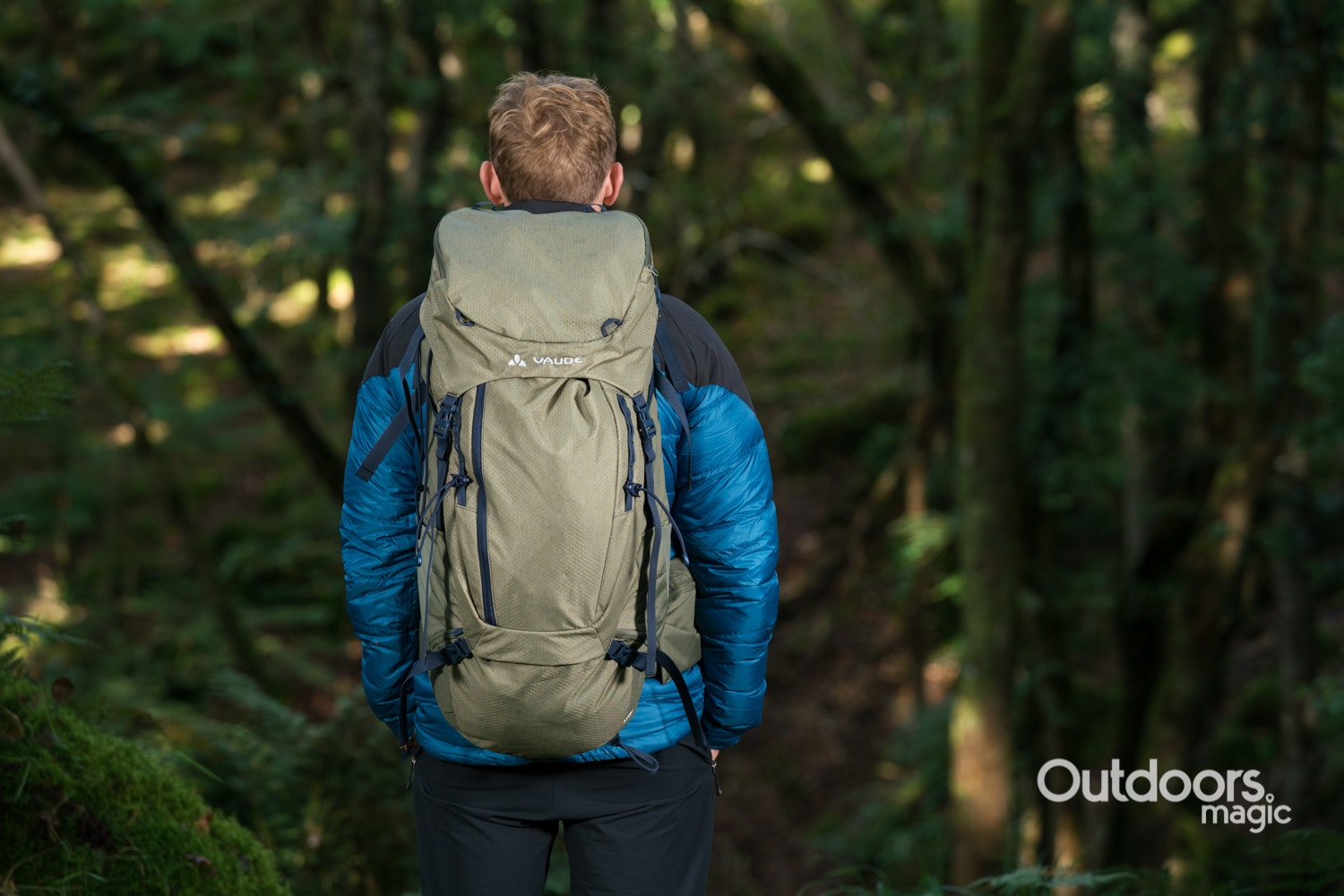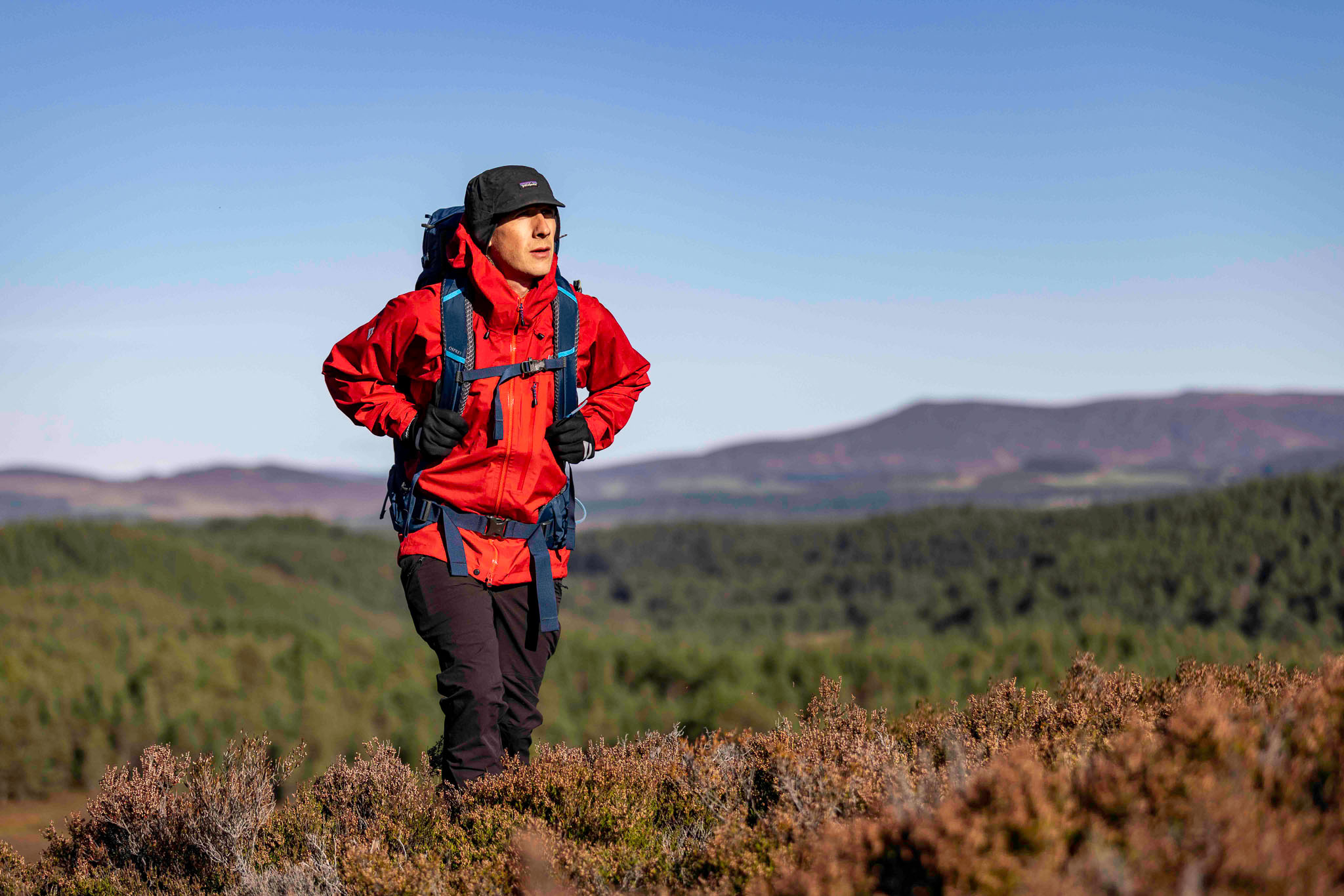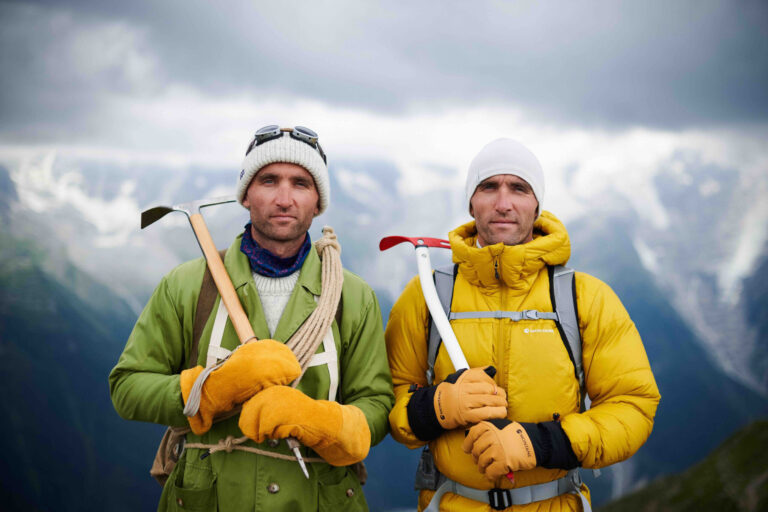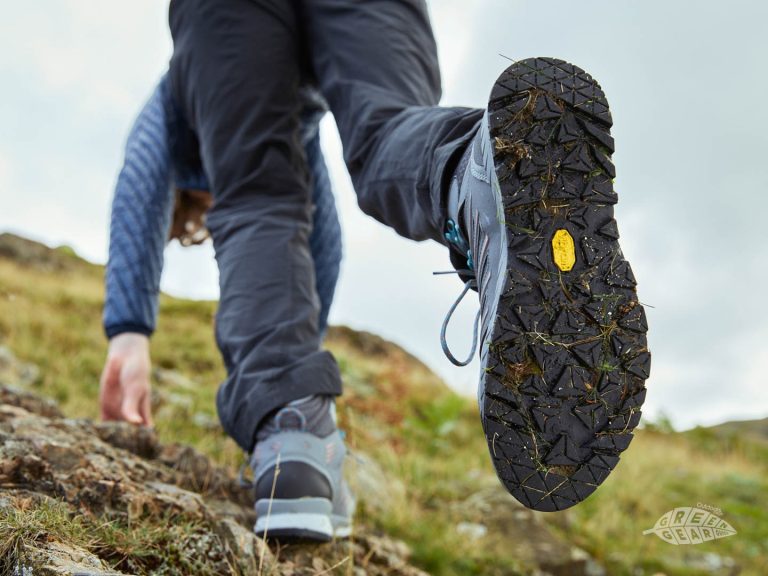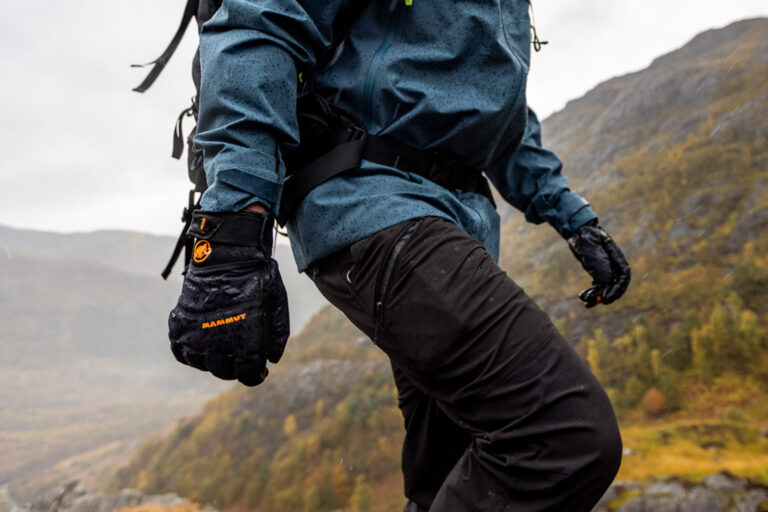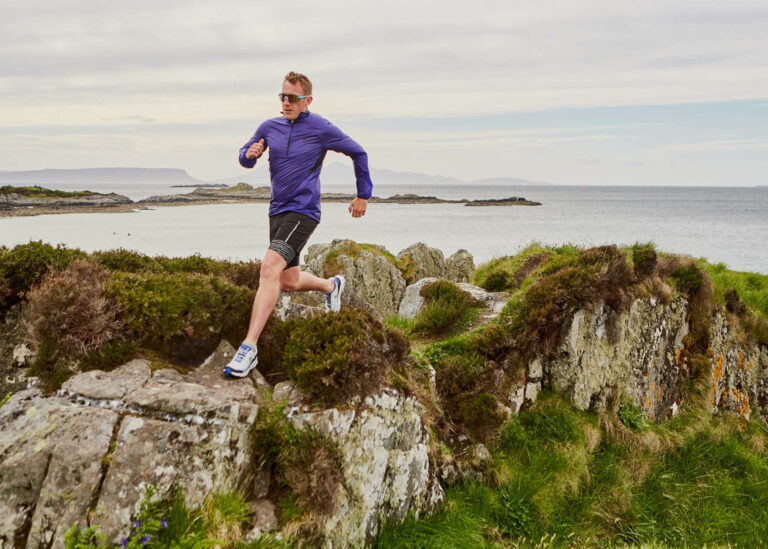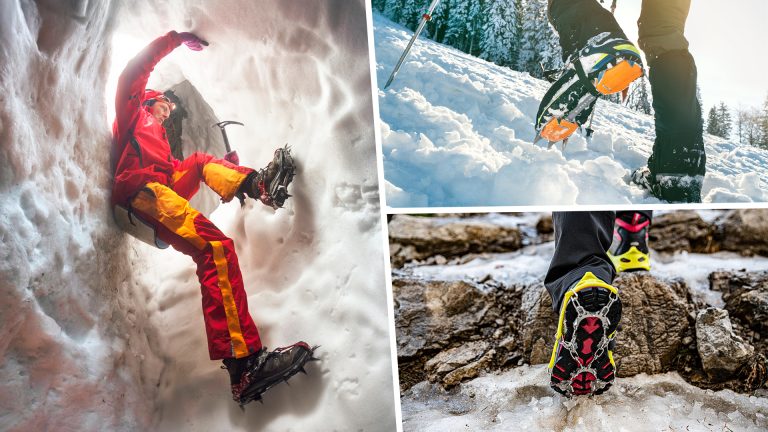Backpacking packs for hiking come in a variety of sizes. The size that’s best for you depends on the trips you intend on undertaking. If you’re trekking between huts or hostels, especially in warmer weather, a 35-litre backpack should be adequate. Ultralight backpackers – the types of people who chop off half their toothbrush – will also stick to around 35L for longer trips with a tarp or tent outer.
For those who like backpacking with a bit more comfort at night, or in colder months when you need a heftier sleeping bag and sleeping mat, something between 38 and 55 litres should be right. Backpacks over 55L should suit anyone heading into areas of wilderness for long periods of time, when there’s little chance of resupplying and you have to carry everything you need in with you.
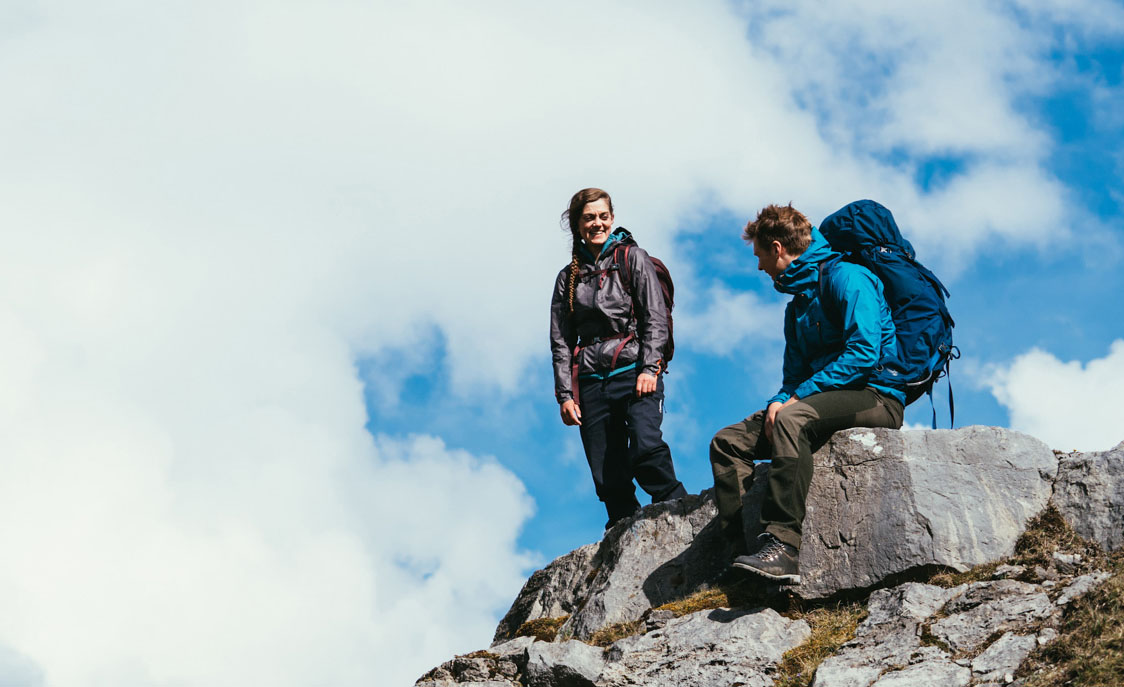
Once you’ve decided on the size, the next consideration, and the one that you should prioritise above all else, is the carry comfort. The backpack is going to essentially be your home for a few days; it’s going to get heavy, it’s going to get annoying, and it must be comfortable. And the only way to test that is to try it on. Fortunately, here at Outdoors Magic, we’ve tested a whole bunch of hiking backpacks so you don’t have to.
And if you’re looking for women’s hiking backpacks specifically, we’ve done some tests for that too. Check out our results here.
How The Backpacks Were Tested
I tested the majority of the backpacks that are featured here, along with all of the ones that didn’t make this list too. The ones I didn’t test, which were mainly the women’s models, were assessed by members of our gear team who you’ll see in the pictures within this article. I had the final say on which items were chosen for this round up, making my selections based on things like volume flexibility, adjustment, carrying comfort, load management, durability and features. I also considered overall value and factors relating to the sustainability of the product.
The Expert
I’m an outdoor gear reviewer with over ten years of experience working for various outdoor magazines and judging gear for the likes of ISPO, the Scandinavian Outdoor Awards and the OIA Awards.
When I’m not writing about gear as part of my job, I’m testing it as part of my hobby which is multi-day backpacking. I’ve hiked a long list of trails over the years, including the whole 870-mile Wales Coast Path, the Camino de Santiago, Alta Via 2 and the Cambrian Way, which I am now a trustee of.
Our Team’s Best Hiking Backpacks for 2025
Here’s the list of the best hiking and trekking backpacks we’ve come across following our extensive testing and reviewing throughout the mountains of the UK. These are the category winners:
- Osprey Kestrel 38L – Best Overall Backpacking Backpack
- Ortlieb Atrack 35L – Best Waterproof Backpack
- Gregory Maven 58L – Best Backpack for Big Loads
- Highlander Ben Nevis 52L – Best Value Hiking Backpack
- Bach Molecule 45L – Best Ultralight Backpack
- Sierra Designs Flex Capacitor 40-60L – Best Multi-Use Backpack
Editor’s Note: This article was updated in September 2025 to ensure that all of the products are still available for purchase.
1. Osprey Kestrel 38L Backpack
Our winner: the best backpack overall following our tests
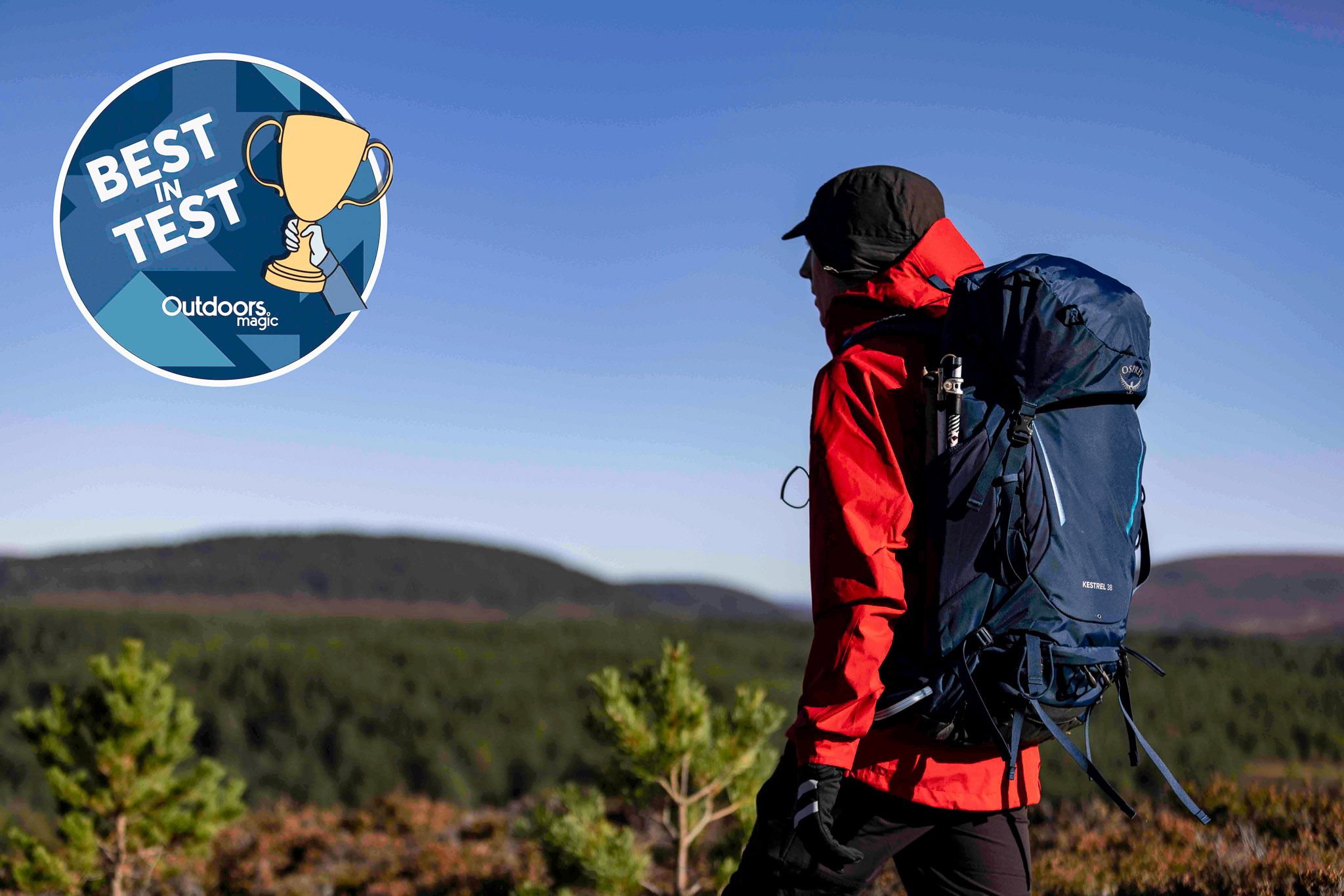
Price: £160
Weight: 1760g
Best for: wild camping, hut to hut trekking, winter hillwalking
Pros: durable, comfortable, loads of useful details, ergonomic
Cons: a little on the heavy side
35 to 40 litre packs like this one from Osprey hit a nice sweet spot, offering the right kind of capacity to cater for a range of different types of trips, from quick weekend wild camps through to big winter days out where you need plenty of layers and technical kit for safety.
It falls within Osprey’s broad Kestrel (men’s) and Kyte (women’s) range which is made up of a number of different packs at various capacities. It’s a hugely popular series for the brand and one that we’ve always been impressed with here at Outdoors Magic.
Our tester said, “I can’t really fault this pack. It’s comfortable, it handles loads well, it has loads of useful details and it’s incredibly versatile. It’s probably one of the most ergonomic backpacks I’ve tried. There’s padding in all of the right places, support at the lumbar and plenty of air channels for ventilation too.”
The main material feels extremely hard wearing. During our tests in Scotland, the pack went through a fair bit of abrasion but emerged looking good as new. It offered good water resistance but we found ourselves using the supplied rain cover when the rain really picked up, just for the peace of mind that our kit was properly protected.
As we’ve come to expect from Osprey, there are loads of useful details, including ice axe loops, a front shove-it pocket (we found this was perfect for a down jacket) and base access to a sleeping bag compartment. Credit to Osprey for using bluesign approved 100% recycled fabrics here too.
Full Specifications
Available in men’s (Kestrel) and women’s (Kyte) versions / various capacities within the range / back sizes: S/M and L/XL / rain cover at base / recycled nylon fabrics / internal hydration bladder sleeve / bottom access / trekking pole and ice axe loops.
Selected for the Outdoor 100 gear guide – here’s our full Osprey Kestrel 38 review.
Buy the Osprey Kestrel 38L: £190 at Osprey.co.uk
2. Ortlieb Atrack 35L Backpack
Selected as our choice for best waterproof backpack
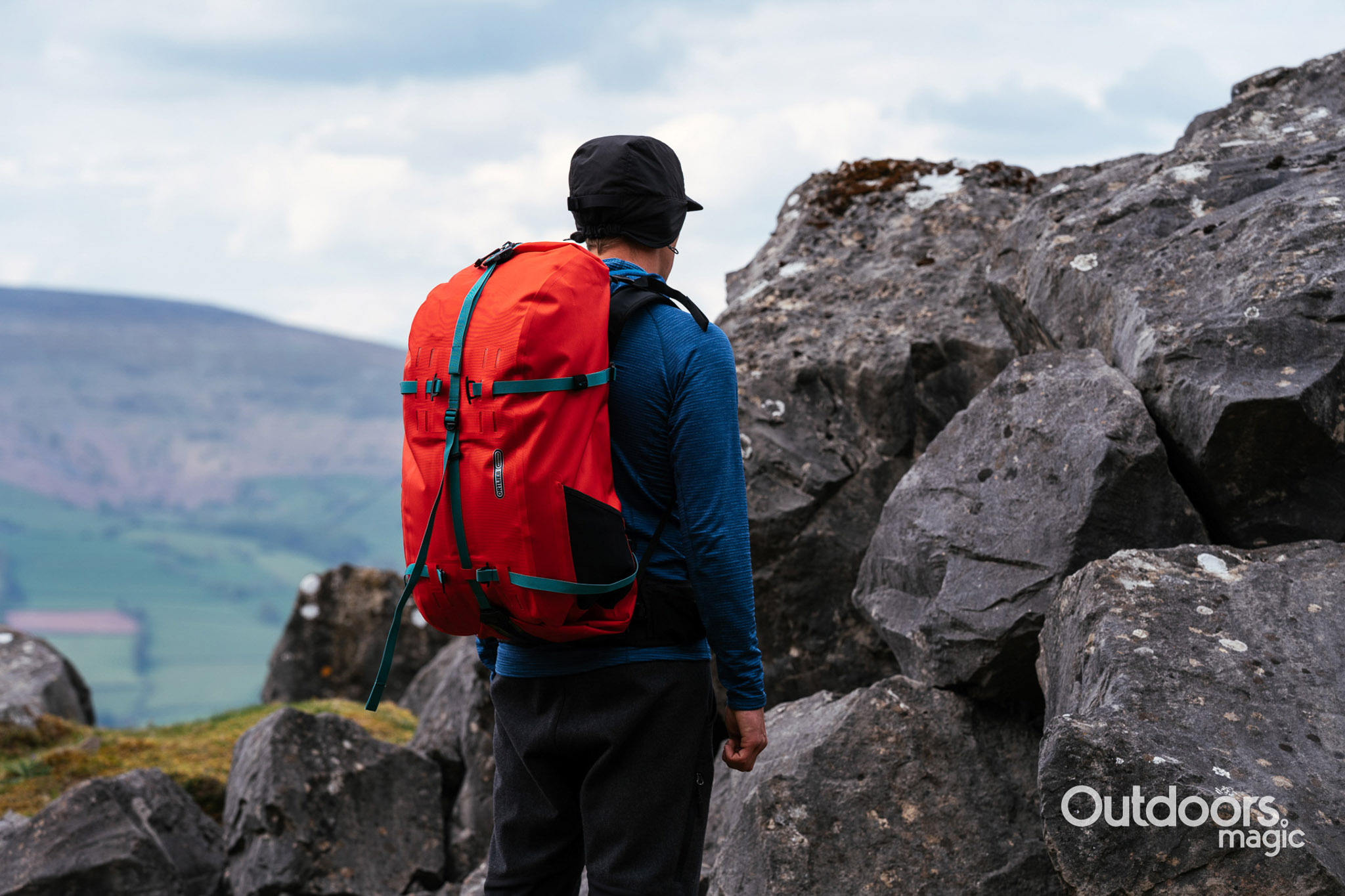
Price: £220
Weight: 1560g
Best for: Hiking in wet weather, canoe/kayak adventures
Pros: fully waterproof, durable, very versatile
Cons: doesn’t have all the extra organisation pockets of a non-waterproof bag
The Ortlieb Atrack 35L is a fully waterproof backpack ideally suited towards activities where you’re planning on taking a soaking, whether that be in rivers, lakes, oceans or just on hilltops. This is a pack that trekkers, bikepackers, ski-tourers, kayakers and packrafters can all genuinely rally behind.
Related: Best Waterproof Jackets for Women
A long waterproof zip is located on the back of the pack opens the bag up like a duffel bag, allowing you to get a look inside before picking out what’s needed. Internally, there are four zippered pockets on the Atrack while on the outside there are two net pockets perfectly suited for water bottle storage.
Our tester Ieuan Barrett said, “I’ve not tried it out with a massively heavy weight just yet but I’ve used it for a load of around 10kg containing my camera equipment, wet weather gear and lunch etc., and it coped well. The bag is very comfortable too, with the padding and structure at the back adding support whilst walking. The chest strap also aids in taking strain off the shoulders.”
During our tests, the durability of this thing really stood out – it feels extremely hardwearing. The carry comfort was good and the pack provided its promised wet weather performance. It’s a little fiddly in places and the main zip is quite stiff due to its waterproof design, but generally this is a pack that’s innovative and that comes across as being very well made and built for the outdoors.
Full Specifications
Tear resistant nylon fabric / 4 zippered inside pockets / adjustable back panel / ergonomic shoulder straps / two outside net pockets / daisy chains on the front / 4 compression belts
Read our full Ortlieb ATrack ST review.
Buy the Ortlieb Atrack 35L: £220 at Uk.ortlieb.com
3. Gregory Maven 58L Backpack

Price: £190
Weight: 1.59kg
Best for: long-distance backpacking, multi-day adventures
Pros: innovative hipbelt and back system, multiple storage options, handy side-loading access zipper
Cons: not the lightest
The Gregory Maven 58L is a backpack purpose-built for trekking. It’s the kind of long-distance gear hauler you want with you on multi-day hiking adventures such as the South West Coast path or the Pennine Way for example, where a balance between comfort and capacity is key. It’s not the lightest pack out there, with the comfortable back panel and durable fabrics adding a bit of weight to it, but we wouldn’t call it heavy either.


